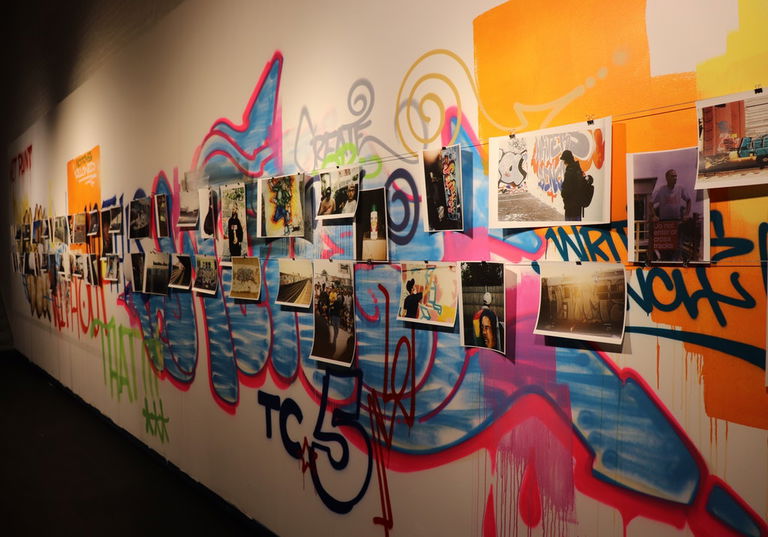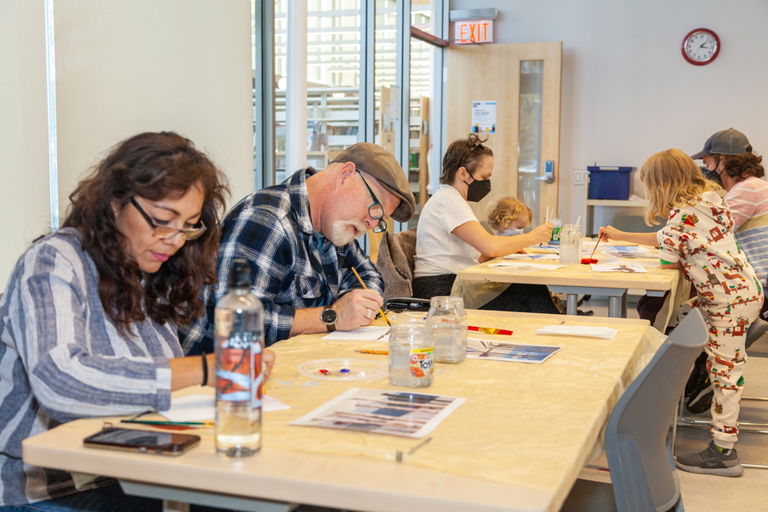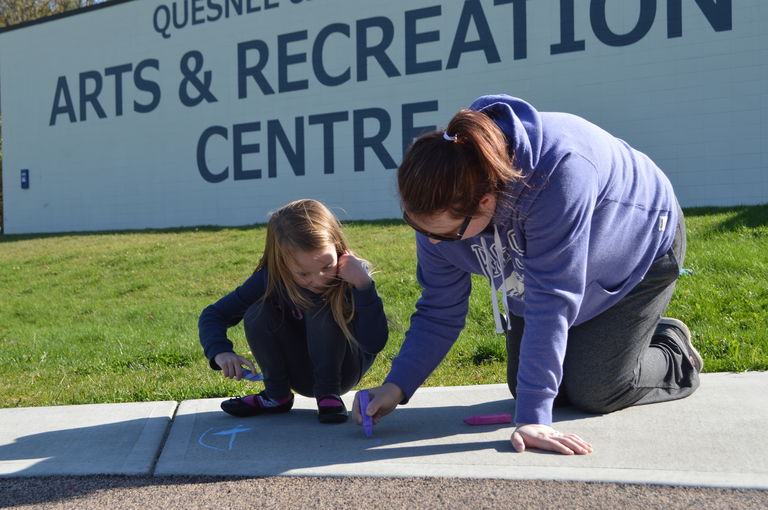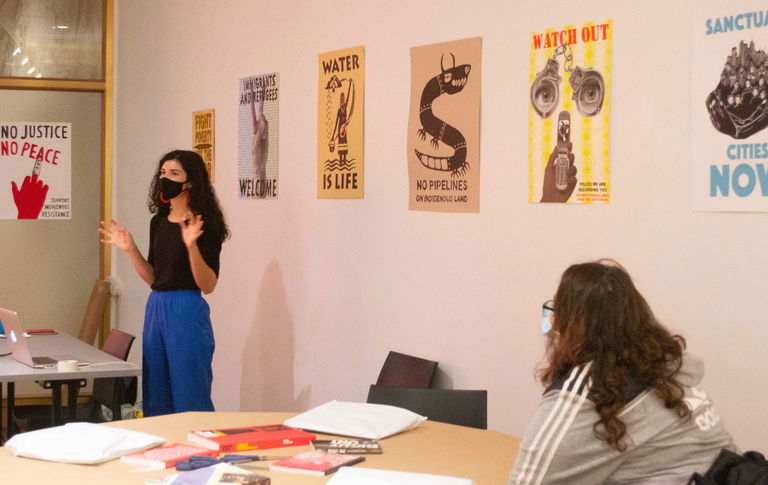
Meet our Organizers: Julia from Graffiti Art Programming in Winnipeg
Culture Days
Apr 9, 2020
Looking back on the 2019 celebrations, we want to highlight some exceptional organizers who help make the Culture Days celebration what it is across Canada. Julia Wake is the Programs Director at Graffiti Art Programming Inc. (GAP), an organization that promotes arts and culture in Winnipeg through a variety of workshops, events and exhibitions, most of them stemming from hip-hop culture. We wanted to learn a bit more about what they do and their engagement with young Winnipeggers through the arts. Here’s what Julia had to say.

Can you briefly describe the purpose and mission of GAP and its programs?
Graffiti Art Programming Inc., also known as GAP, is a community arts organization that offers fun and educational workshops to people of all ages, skill levels and backgrounds. Although our programming is rooted in hip-hop culture, we offer free workshops and mentorship opportunities in various mediums and styles, including visual arts, dance, music, and podcasting. GAP also runs the Graffiti Gallery, an exhibition space that features emerging and established artists working outside of institutional expectations, with a focus on contemporary graffiti and street art. One of our main goals at GAP is to keep arts and culture accessible to everyone in Winnipeg by offering all of our programming for free, and ensuring that the programming we offer is relevant to the community in which we are located.
How have you evolved and developed since the gallery first opened?
When the Graffiti Gallery first opened in 1999, it was designed as a space where graffiti artists could practice their art, safe from the threats that faced them on the streets. Instead of painting illegally on private property, where police, rival artists, and precarious heights all served as constant dangers, artists were invited to use the Graffiti Gallery as a studio where they could develop their professional practice by painting on canvases. GAP also served as a liaison between artists and businesses interested in commissioning murals to be painted legally on their walls.
Soon it was not only graffiti artists, but artists of all types, as well as neighbourhood residents, who were coming to the Graffiti Gallery to see what was happening within its walls. It quickly became clear that there was a very real need for an urban arts centre that would serve youth from Downtown and the North End as a place where they could access all the materials and expertise they needed to express themselves creatively. As GAP has grown over the years, we have expanded to offering free arts workshops six days a week, at several easily accessible sites, facilitated by practicing artists who work in all sorts of different styles and mediums.
GAP works hard to create a continuity between the exhibits that we feature at the Graffiti Gallery and our community programming. Each exhibit is accompanied by artist talks, panel discussions, gallery tours and community workshops, engaging the wider community in conversations with exhibiting artists around issues that matter to them. This level of engagement between the artists and the community is a two-way street, wherein exhibiting artists and their work are inspired by the issues facing the community, while the community is given a chance to engage in the concepts, materials and methods utilized by the artists in a tangible way. Facilitating the interaction between the artists and the community ensures that wherever the exhibiting artists are from, their work is relevant to the people in our community. It also breaks down the barriers that exist in some traditional institutions that can often isolate the artist and alienate the audience from their work.
Are you an initiative specific to Winnipeg, or have you seen similar places across Canada?
Graffiti Art Programming Inc. is an initiative specific to Winnipeg, and Graffiti Gallery is rather unique in that it is one of the only galleries in North America dedicated to exhibiting graffiti-based art.
What strategies do you have for engaging younger audiences?
GAP prioritizes engaging young audiences, and the majority of our off-site programming is designed for children and youth aged 6-29. We’ve learned that outreach is an integral part of building relationships with community members and partner organizations, and the majority of our art workshops are now held outside of our main gallery space, at community centres and other hubs, providing us with opportunities to build relationships within a wide network of communities.
We also offer exhibition tours and workshops at our main gallery space for school groups and youth-serving organizations, designed around the current exhibit; usually with a focus on exploring materials or concepts that the artist uses. Our goal is to generate discussion and dialogue around the artwork, and to challenge institutional notions of exhibition spaces. The art created in these workshops is displayed in an adjacent gallery space for the duration of the main exhibition.
To initiate connections outside of our regular programming sites and expand local awareness of our programming, we market via social media, event listings, and print media. We are on Instagram (@graffitiartprog, @studio_393) and Facebook (@GraffitiArtProgramming, @Studio393).
Why do you think it is important to exhibit graffiti art in this kind of setting?
GAP’s roots are in graffiti and street art. Since opening our doors, we have exhibited some of the worlds most celebrated graffiti artists, who have mentored emerging artists from marginalized communities in Winnipeg on how to turn a passion into a profession.
Graffiti has always been an art form that gives youth an opportunity to make their mark on their environment. Giving a sense of agency to those who have lived their lives in what can sometimes feel like an overwhelmingly indifferent urban landscape, many artists use graffiti as a tool to respond to feelings of insignificance. From its beginnings in cities like New York and Philadelphia, graffiti has become a worldwide phenomenon, giving voice to marginalized youth internationally, especially those living in urban areas. People who come to the Graffiti Gallery for tours of the exhibits are fascinated to learn the history of the art form and its contemporary applications.
The contemporary street art scene that most people are familiar with today, such as Banksy and Shepard Fairey aka Obey, has its origins in graffiti. Likewise, many clothing companies tied to skate and hip-hop subcultures have designs and styles heavily influenced by graffiti artists. The influence of the graffiti movement is pervasive throughout contemporary urban culture, and Graffiti Gallery is a place where the artistic inclusivity and autonomy of the movement continues to be encouraged and celebrated.
How would you define your role within the Winnipeg artistic community?
Graffiti Gallery exhibits both international and local artists. Within Winnipeg’s artistic community we’ve prioritized supporting emerging artists by employing an array of artists and providing them with opportunities to engage in creative programming. This includes bringing innovative programming to community spaces, sharing art with the intent of building relationships, promoting dialogue, and contributing to healthy neighbourhoods by providing a means for creative expression.
How long have you been involved with Culture Days?
Graffiti Art Programming has been involved with Culture Days since 2010, the last year of Governor General Michaëlle Jean’s mandate. Our Executive Director, Stephen Wilson, was involved in a planning meeting that led to the formation of an official advisory committee for Culture Days. On a programming level, we’ve hosted an annual Artist Mash-Up event since 2006 at Student Day at The Forks, which is a feature project of Culture Days Manitoba. The Artist Mash-Up provides visiting classes with the opportunity to see 8-10 local artists work collaboratively on a series of large paintings throughout the course of the day. Additionally, the event provides opportunities for our youth participants to perform, sharing skills they’ve learned at our dance, music, and DJ classes.
Why do you participate in Culture Days?
Participating in Culture Days provides us with opportunities to connect with other arts initiatives in Manitoba, and nationally. We believe it’s important to continue to build an appreciation for the arts, and we recognize the valuable role that artists and community arts organizations play within communities.
This article is part of a special blog series. Find more organizer profiles here.





